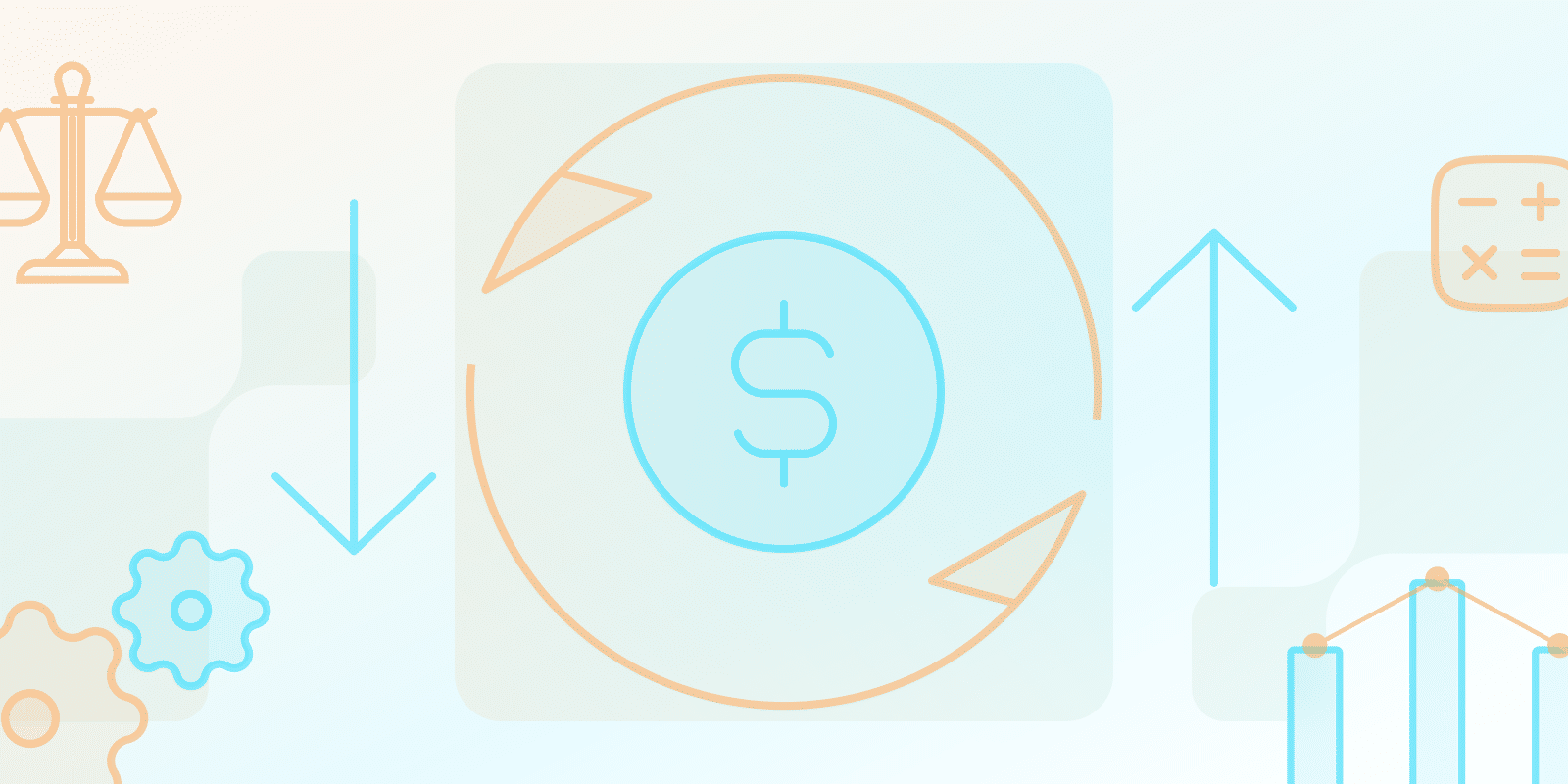財務管理に影響を与えることができます。
SaaSの変動費とは?

SaaSの変動費とは?
SaaSの変動費は、消費量または使用量に応じて変化する費用です。 支払い処理手数料、使用量ベースのクラウドホスティング、カスタマーアシスタンスなどがその例です。これらの費用は、毎月の損益計算書に大きな影響を与え、財務予測と税務計画で考慮する必要があります。
変動費は固定費よりも総費用に占める割合が低い場合もありますが、特にSaaS企業においては、収益性とユニットエコノミクスに大きな影響を与えます。健全な財務実績を維持するには、変動費を効果的に追跡および管理することが不可欠です。
変動費と固定費の違いは?
SaaS企業では、変動費はアクティビティまたは使用量のレベルに依存する費用です。顧客数またはデータ量が増加すると、これらの費用も増加します。逆に、使用量が減少すると、変動費も減少します。
これは、使用量に関係なく比較的安定している固定費と比較したものです。固定費の例としては、家賃、正社員の給与、基本ソフトウェアのライセンス料などが挙げられます。
SaaSでは、変動費は主にサービスの提供と提供に関連しています。
これらは、顧客によるリソースの消費に直接依存します。
SaaSの変動費の主な構成要素は何ですか?
通常、SaaSの変動費の主な要素は次のとおりです。
- クラウドインフラストラクチャ費用:これらは多くの場合、最も重要な変動費です。これらには、AWS、Azure、Google Cloud などが提供するクラウドサービス(ストレージ、処理能力、帯域幅など)が含まれます。クライアントの使用量の増加に伴い、より多くのサーバーリソースが必要になり、費用が増加します。
- カスタマーサポート費用:サポートチケット、チャットセッション、電話での会話の件数は、サポート担当者の給与など、他のコストが固定されている場合でも、カスタマーサポートの変動要素となります。これらの費用は、顧客エンゲージメントと利用の複雑さの増加によって引き起こされる、サポートインタラクションの増加の結果として増加します。
- 取引手数料: SaaSプラットフォームが金融取引を可能にする場合、決済ゲートウェイ(PayPalやStripeなど)からの処理手数料は変動費用です。通常、これらの手数料はすべての取引の一部を表します。
- サードパーティAPIの使用: 通信、データエンリッチメント、マッピングなどの機能のために、多くのSaaSアプリはサードパーティAPIと連携しています。APIの使用コストは、リクエスト数によって異なります。
- データストレージと帯域幅:より多くのデータが送受信および保存されるにつれて、ストレージと帯域幅に関連する費用は増加します。これは、大量のデータを使用するアプリにとって特に重要です。
- 変動販売手数料: 営業担当者の賃金の一部は固定されていますが、多くの企業は新規顧客の獲得数や契約金額全体に応じた歩合給を支給しています。その結果、これらの歩合給は変動費とみなされます。
SaaSビジネスにとって、変動費を追跡および管理することが不可欠なのはなぜですか?
さまざまな理由から、変動費管理は適切に行われなければなりません。
- 正確な 財務予測:消費量と費用を相互に関連付けて理解することで、より正確な財務見積もりが可能になります。これは、戦略立案、財務計画、およびリソース配分に役立ちます。
- 価格最適化: 価格戦略 は変動費分析に基づいています。これは、費用を賄い、目標利益率を達成するために必要な最低価格を把握するのに役立ちます。
- スケーラビリティと収益性: 変動費は、SaaS企業の拡大に伴い、その収益性に大きな影響を与える可能性があります。すべて企業のコスト最適化が必ずしも高い利益率や持続的な成長を保証するわけではありませんが、これらの結果に影響を与える可能性があります。
- リソース配分: 変動費を追跡することで、リソース配分を改善できます。たとえば、クラウドインフラストラクチャのコストが高い地域を特定することで、最適化の取り組みが生まれる可能性があります。
- 非効率性の発見: プラットフォームまたはサポート手順の非効率性は、変動費を調べることで発見できます。費用の調整と顧客満足度は密接に関連しています。
SaaSの売上原価(COGS)にはどのような要素が含まれていますか?
顧客へのサービス提供に関連する直接費は、以下に含まれます。 SaaS COGSこれらには、ソフトウェアライセンス、クラウドホスティング、インストール、サイト信頼性、および本番環境の維持のためのスタッフ費用が含まれます。
SaaS企業の財務健全性に影響を与える粗利益率を効果的に計算するには、生産とサービス提供に直接関連するこれらのコストに注意を払う必要があります。価格設定と収益性の目標を設定し、サービス提供の実際のコストを決定するには、正確なコスト追跡が必要です。
これらの費用を正確に追跡しないと、収益性の評価、価格設定、リソース配分が不正確になる可能性があります。
次のような重要な指標を監視します ARR, 顧客獲得コスト (CAC)、そして CLTV/CAC 比率
SaaS企業は、どのように変動費を効果的に管理および最適化できるでしょうか?
変動費は、いくつかの戦略を使用して管理および最適化できます。
- クラウドコスト最適化:クラウド支出を監視し、最大化するには、次を使用します クラウドコスト管理 ツール。データストレージの最適化、インスタンスの予約、自動スケーリングの実装を行います。
- セルフサービスと 自動化: サポートチケットの数を減らすために、セルフサービスツールを提供し、ヘルプ手順を自動化します。
- 効率的なアーキテクチャとコード: システムアーキテクチャとコードを最適化することにより、リソース消費を削減します。
- データ管理: 帯域幅とストレージの費用を削減するために、効果的なデータ取得およびストレージ技術を導入します。
- ベンダーとの契約: 決済ゲートウェイ、クラウドプロバイダー、およびAPIプロバイダーと有利な価格を交渉します。
- 従量課金制:費用を消費者の支出に一致させる使用量ベースの価格設定スキームを導入します。
使用状況、費用、カスタマーサービスに関する重要な指標を定期的に監視および評価し、パターンと潜在的な開発領域を特定します。
SaaS企業は変動費に関してどのような課題に直面していますか?
いくつかの課題は以下のとおりです。
- 予測不可能な消費: 顧客の消費パターンの予測不可能性のため、変動費を正確に予測することは困難な場合があります。
- スケーラビリティの問題: 急速な開発によってインフラストラクチャとサポートリソースが逼迫し、予期しないコストの増加につながる可能性があります。
- ベンダーロックイン: 特定のクラウドまたはAPIプロバイダーへの依存は、交渉力と柔軟性を低下させる可能性があります。
- コスト追跡の複雑さ:複数のプラットフォームおよびサービスにわたる変動費の監視と評価は、困難な場合があります。
- コストパフォーマンスのバランス: パフォーマンスと顧客満足度は、コスト最適化のために犠牲にすべきではありません。
包括的な理解と効率的な監視を含む、変動費の効率的な管理は、SaaS企業の長期的な成長、潜在的な収益性の向上、そして顧客への価値提供の向上に貢献する可能性がありますが、他の要因もこれらの成果の達成に重要な役割を果たす可能性があります。
結論
SaaS組織における財務実績を維持するには、変動費の効率的な追跡と管理が必要です。財務予測、価格戦略、収益性、リソース配分、および運用効率はすべて、変動費の最適化に対する理解とコミットメントによって大きな影響を受けます。
ある程度の障害はありますが、変動費管理の習得は、SaaSの長期的な成長、収益性、顧客価値の向上に不可欠です。企業は、積極的な対策を活用することで複雑さを乗り越え、競争力を獲得できます。